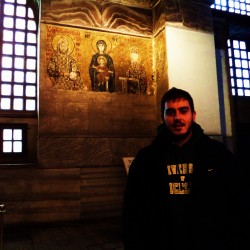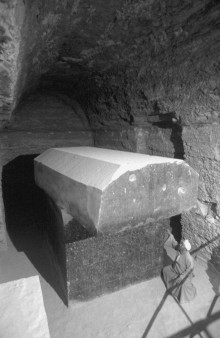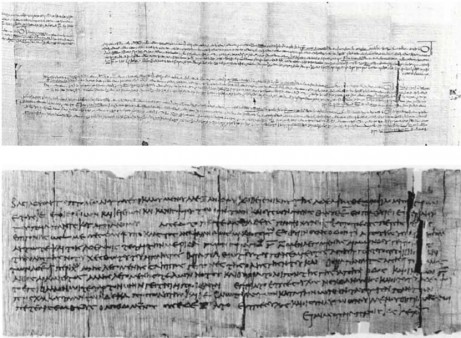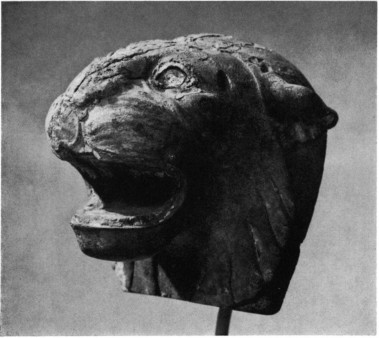A. Introduction
“The Late Period in Egypt is no Dark Age.
It shows all the signs of prosperity appropriate to the ancient world: temple building, superlative sculpture, the raising of armies, the administration of land.
Together the evidence illustrates the capacity of a society to survive and adapt to great changes in political leadership, often violently wrought.”
(Kemp 2005: 346)
The Late Period (664 – 332 BCE) encompasses the last eras of native rule experienced by the ancient Egyptians, interrupted by two phases of Persian occupation. Its end is marked by the conquest of Egypt by Alexander the Great and the beginning of his successor’s Ptolemaic period (Lloyd 2002: 369; Trigger et al 1983: 278). While politically this period witnessed great turbulence and change, we should keep in mind that its cultural dynamics are not to be identified with its political history since as we will see, they followed very different paths (Kemp 2005: 346). Indeed, the cultural identity of the Late Period Egyptians, through various means of adaptation, managed to remain well-defined: tapping on ancient sources to demonstrate its continuity while holding no disregard towards innovation and external contacts (Naunton 2010: 134; Wilson 2010: 241). Therefore, a dismissal of the period as the ‘last gasp of a once great culture’, while superficially sound, it cannot illustrate but a reluctance to observe an affluence of facts that point us towards the opposite direction (Kemp 2005: 346; Lloyd 2002: 394).
The purpose of this essay is not a linear presentation of the Late Period characteristics, but to tackle the phrase in question at all the points it implies. With that in mind, the structure will develop as following: in the first part, we will observe how the 26th Dynasty of Sais inaugurated this new era by unifying the land of Egypt under its control and succeeded in creating a splendor parallel to older eras, through a mixture of ambitious building and cultural innovation. In the second part, I will demonstrate how the cultural identity of the Late Period Egyptians persisted through political difficulties and foreign occupation; a continuity which is particularly conspicuous in cultural aspects like the visual arts and the funerary practices. In the last part, I will summarize my points reaching the final conclusions.
B. Greatness under pressure
For the first time in ancient Egyptian history, we are dealing with a period during which this great culture had to act under the pressure of other civilizations – equally elaborate and imposing – from the Mediterranean and the Near East (Trigger et al 1983: 279). Nevertheless, the office of the king which was the backbone of the ancient Egyptian ideological system along with the provincial power bases (Kemp 2005: 337), found ways to adapt to the new circumstances. On the foundations of kingship, the Late Period Egypt witnessed not only cultural continuity, but also prosperity and innovation that can be compared to older periods of splendor.
The Saite Renaissance
The re-unification of the country under one pharaoh is always the ending sign of an Intermediate Period. In this case, it happened by Psammetichus I the establisher of the XXVIth or Saite Dynasty, around 656 BCE. It should be noted however, that the rule of the Kushites (XXVth Dynasty) that preceded the Saite re-unification of the country, was far from a foreign rule that decayed the land’s cultural identity. On the contrary, during their rule one can observe signs of economic prosperity and continuation: these are reflected on the copying of religious texts and the extensive building programs on which these kings embarked (Edwards 2004: 120-1; Petrie 1923: 285, 287-8). In other words, the task of the Saite Dynasty did not involve the re-establishment of the essential ideology of kingship since the Kushites not only conserved it, but did so in a genuine way, on the same time planting the seed for the so-called archaism, which would culminate during the Late Period and safeguard the cultural continuity of the land (Naunton 2010: 134). Nonetheless, Psammetichus I did try to distinguish himself from the Kushite kings as it is evidenced by his iconographic preferences (Tait 2003: 4; Trigger et al 1983: 289).
When he rose to the throne, he adopted many practices which were traditionally employed by the pharaohs after a political upheaval; the king was perceived as the restorer and the protector of the realm’s order, the cosmos, and this aspect of his was particularly imperative after an Intermediate period (Lloyd 2002: 376). The restoration process of Psammetichus I included more than the unification of the country under a sole ruler: he also reconstructed destroyed temples (Wunderlich 1952: 45) and restored statues dedicated to important centres of cult like Thebes, as he claims in the inscription of his Nitocris Adoption Stela (Goedicke 1970: 69). The religious devotion that is revealed through it, not least as a source of divine legitimization (Kahl 2010: 5), is further manifested in the extensive building programs that he and the rest of the XXVIth Dynasty rulers devoted to.
Having secured the unity of Upper and Lower Egypt through a diplomatic policy (Spalinger 1976: 142), Psammetichus I set forward his building project. The Dynastic capital of Sais and its temple of Neith seems to be a major focus of building activity and if it was not for the poor preservation conditions of the Delta area (Zivie-Coche 2008: 5), the image revealed would be an impressive one (Lloyd 2002: 377-8; Trigger et al 1983: 293). However, Sais was only one of the many places where he and his successors, Necho II, Psammetichus II, Apries and Amasis built. Places of continuing importance where temples were erected or expanded include Heliopolis, Thebes, Edfu, Tanis and Memphis among others (Lloyd 2002: 377), while their decoration and masonry from hard stones reveal high levels of workmanship and sophistication (Kuiper 2011: 86; Zivie-Coche 2008: 5-6). At Memphis in particular, Psammetichus I displayed true involvement in the realm’s religious life through the observation of the Apis bull festivities (fig. 1), which was becoming very popular by his time. His practice was followed by the pharaoh Amasis, who buried one Apis bull in a sarcophagus of rose granite (Perdu 2010: 143-149). With Amasis who was seen by the Greeks as a benefactor (Kuiper 2011: 85), we will now turn to explore an important development of Late Period Egypt: its foreign contacts.
Foreign contacts and innovation
The integration of the foreign mercenaries (notably Ionian & Carian) in the Egyptian army by Psammetichus I was a novelty of the Late Period that had far more consequences than one would imagine. As far as their military role is concerned, their contribution was of paramount importance: they led the victories that established the XXVIth Dynasty as the sole ruling power which re-unified Egypt (Lloyd 2002: 371) and, while their presence has been frequently criticized of ‘tainting’ the unspoiled Egyptian culture (AEN 2010: 162), I would argue that they were actually the catalyst for the re-unification and thus the re-consolidation of it. However, a far more important consequence of their presence was that they ‘opened the door’ for others to come, especially Greek merchants and craftsmen who gradually established trade colonies and greatly propelled the Egyptian economy (Kuiper 2011: 85; Perdu 2010: 143). The Saite Dynasty, realizing its wealth and potential for power in the Mediterranean context, was now oriented towards the sea. This is evidenced by the great advances in ship-building techniques, Necho II’s attempt to dig a canal between the Nile and the Gulf of Suez, and the construction of triremes for military expeditions in the Mediterranean and Red Sea (Bard 1999: 70; Herodotus 2.158; Perdu 2010: 144-5). The epitome of these economic relations with the Mediterranean world however, is the development of the Greek emporion of Naucratis, which reached its zenith during the reign of Amasis – a pharaoh whose long reign was characterized by general prosperity and administrative reforms that defined the still dynamic culture of Egypt (Kuiper 2011: 85-6; Perdu 2010: 148).
In correlation with the Greek influence on the Egyptian culture and language, the impressive innovation of the demotic script should not be omitted: a new type of cursive writing that replaced the Theban hieratic in many documents (but not in some religious ones, e.g. the Pyramid texts) and that firstly appeared in Lower Egypt around the end of 6th century BCE (Ryholt 2010: 710; Shore 1965: 20). Needless to say, it reflected the administrative changes that the reign of Amasis and the Greek influences brought about, since the demotic script satisfied the need for a variety of new document types, which ranged from legal to administrative and economic – without failing to bring a fresh wave of literature as well (Bard 1999: 71; Haring 2010: 235).
However beneficial these external contacts and influences might were, a novelty made its appearance in the Late Period which has been interpreted as a social reaction to the increasing foreign presence: the augmenting popularity of the animal cults (Bard 1999: 506; 872; Kuiper 2011: 86). Even though animals were used to represent gods even from the period of the New Kingdom (Kemp 2005: 374), it was during this time when animals, like the aforementioned Apis bull, came closer to gods and were thought to represent their incarnated essence on earth; of course, this implies that the animals were not considered to be sacred themselves and were certainly raised to be sacrificed and distributed to the votives (Szpakowska 2010: 510). The interpretations for their increasing popularity have been molded by the context in which these cults grew: the political fragmentation of the period which led to the increasing importance of the provincial divinities (Lloyd 2002: 391) and the Greek (and later Roman) presence which created the pressing need for the Egyptians to differentiate themselves – as sources inform us, the foreigners were appalled by the very concept of animal deities (Bard 1999: 506; Trigger et al 1983: 295; Wilson 2010: 250). It should be noted however, that the nationalistic explanation has been productively debated (Kemp 2005: 380-1).
C. Cultural Continuity
In the year 525 BCE, the Persian king Cambyses defeats the army of Psammetichus III, the last XXVIth Dynasty pharaoh, and includes Egypt in the vast Persian Empire. The vitality of the Egyptian culture was not bent throughout the Achaemenid rule however, and it continued to flourish during the last period of native rule, the Egyptian Independence (404 – 343 BCE). Expressions of ‘greatness’ in the conventional form may have been waning after the XXVIth Dynasty, but it would be unfair to designate the Late Period as the ‘last gasp’ of the Egyptian culture as we would be undermining its astounding continuity which is evident in artistic, mortuary and social relations contexts (Lloyd 2002: 383; Perdu 2010: 149).
The Persian Occupation
The fact that Cambyses immediately adopted the pharaonic role is a statement about the magnitude of the enduring Egyptian culture. However, the reduction of temple revenues that he enforced (Kuhrt 2007: 48; Kuiper 2011: 87) contributed to a bad reputation of his – not without the help of the ‘anti-Persian’ writings of classical authors (Wiesehöfer 2001: 2-3). The truth is that Cambyses continued the pharaonic tradition with great respect: in line with the archaistic tendencies of the period, he appropriated titles that had been used by older successful pharaohs (Kahl 2010: 2; Perdu 2010: 150). Despite his probable aggression towards the animal cults as evident in the incident recorded by Herodotus (Bard 1999: 872; Depuydt 1995: 125; Herodotus III.27-9), he was generally respectful to the native religion and had apparently contributed in the restoration of temples – a practice which was followed by his successor Darius (Brosius 2006: 33; 64; Lloyd 2002: 383).
Darius I, was the most successful of the Persian rulers. His list of achievements includes the continuation of the temple restoration project which actually peaked during his reign (Kemp 2005: 380; Perdu 2010: 151). His building activity at Kharga Oasis in particular has been dignified by Kemp as “an example of local continuity which illustrates the superficiality of historical narrative” (2005: 348), since the aforementioned site had enjoyed the attention of the Saite pharaohs as well. Furthermore, he supervised an Apis bull burial and he is attested of completing the ambitious engineering work of the Saite Necho II: the canal between the Nile and the Red Sea (Perdu 2010: 151; Brosius 2006: 65). It should be noted as well, that the administrative policy followed by the Persians in general (notably initiated by their great king Cyrus), promoted the preservation of the social structure of those conquered lands that had a long tradition of successful administration (Brosius 2006: 47; 50). In Egypt, this resulted in native people occupying the administrative positions while the Persian supervision was kept at a minimum (Lloyd 2002: 384). Despite the conspicuous continuity, the political situation remained tumultuous and not all the Persian rulers showed the same kind of respect and tolerating behavior towards the Egyptians who persistently resorted to revolt attempts when given the chance. Xerxes’ and Artaxerxes’ callous reigns form a typical example (Bard 1999: 72; Lloyd 2002: 384; Perdu 2010: 152).
This unrest led to a brief period of Egyptian Independence spanning the years 404 – 343 BCE and including the 28th, 29th and the 30th Dynasties. During this period, despite the perennial state of political instability, the last pharaohs picked up the baton from the Persian rulers and embarked on their own cultural activity. One of the most memorable reigns was the one of Achoris (393-380 BCE, 29th Dynasty). Having the longest reign enabled him to have a memorable building activity, in places of unceasing importance like the Kharga Oasis, while the origin of some of his royal names can be traced to the reigns of Psammetichus I and Amasis (Kuiper 2011: 88; Lloyd 2002: 385-6; Perdu 2010: 153). The 30th Dynasty is Egypt’s last native rule, during which the prevention of another Persian conquest was the central theme (Perdu 2010: 155). Still, the building activity of these rulers was remarkable with an impressive architectural boom being evident during the reign of both Nectanebo I and Nectanebo II. On the same time, other cultural expressions, like the Apis bull burials and the recently popular animal cults received further support and attention (Ladynin 2013: 6; Lloyd 2002: 386; Perdu 154; 156).
The Second Persian occupation completed around the year 341 BCE is marked by extensive plundering of temples and destruction of cities and their walls. While this period can be described as a phase of discontinuity that the Egyptian culture had never experienced, it did not last long: the arrival of Alexander the Great and the subsequent rise of the Ptolemaic Dynasty revitalized the country and its culture and led a different era of splendor (Zivie-Coche 2008: 1; Lloyd 2002: 390).
Artistic, funerary and social contexts
In the discussion of cultural continuity, one could not possibly omit the artistic expressions of the Late Period and their strong archaistic nature. In this context, the term archaism refers to the application of iconographic and stylistic traits of older periods to the art of the Late Period (Moyer 2011: 70-1). The Late Egyptian artist would borrow elements from any period, from the Old to the New Kingdom (with a preference towards the Middle Kingdom and the 18th Dynasty), in order to parallelize his art to eras of glory. Nonetheless, the consistent high quality in his workmanship and the attention he paid to detail, both reflect a level of sophistication and artistic maturity which are unique to the Late Period (Baines and Riggs 2001: 107; Kuiper 2011: 167; Wunderlich 1952: 47). The insistence in the older repertoire should be seen as a cultural imperative, which was never to be employed without the proper adaptation to the context of the artist’s own period (Cooney 1950: 193-4). Through this complexity of multiple layers of reference, important developments can also be distinguished, like the preference to portray individualistic traits on sculptures (e.g. signs of age) – an element that survived all the way to the Ptolemaic Period (Kuiper 2011: 99; Russmann 2010: 944-5; 954; 966).
The foreign impacts in the Late Period art should be discussed as well. The Persian occupation brought minor but detectable changes: a type of male garment appears as a Persian influence although no parallel has been identified in Persia itself, while another recognizable influence lies in the representation of lions(Cooney 1965: 39; Russmann 2010: 960-1; Mathieson et al 1995: 28)(fig. 3). Nevertheless, most of these influences were adapted to and incorporated in extant Egyptian traditions – the case of the terracotta plaque statues being another fitting example (Rotté 2012: 14-5). As it has been copiously demonstrated in this essay, these traditions were too imposing to be surpassed and this became markedly apparent in the Ptolemaic Period when the works executed in the Egyptian manner, far outnumber the Greek ones (Stanwick 1992: 133).
The way death was regarded and treated in ancient Egypt renders it one of the most powerful sources of cultural expression, not only ideologically, but architecturally and iconographically as well (Hays 2010: 2). As far as the textual and iconographic aspects are concerned, the Late Period witnesses an important revival and revision of the Book of the Dead into a unique form (Janák & Landgráfová 2010: 220; Mosher 1992: 143) of which hundreds of manuscripts have been found, accompanied by thousands of vignettes which have been praised for their artistic value (Kuiper 2011: 170; Müller-Roth 2010: 174). A clear indication of cultural continuity (Ryholt 2010: 711-2) is the fact that its passages, along with the Underworld Books of the New Kingdom and the Pyramid Texts – all of them symbolizing older traditions (Bard 1999: 383) – were employed in the decoration of the burial chambers while texts from the Book of the Dead itself could be even found inscribed on stone sarcophagi (Dodson 2010: 822; Wilson 2010: 254).
A new era of monumental tomb-building commenced with the Late Period as well, particularly as far as high officials like priests and mayors are concerned. Traditional burial areas were re-used (e.g. the Memphite necropolis) while the Dynastic capital of Sais enjoyed particular attention, signs of which are unfortunately preserved only in the writings of Herodotus. At Thebes, on the other hand, we have a well-preserved and highly informative concentration of elite burials in the area of el-Asasif (Dodson 2010: 824; Wilson 2010: 248). Architecturally, they are mud-brick superstructures, some of them marked with complex corridors and chambers, which faithfully imitated the characteristics of New Kingdom mortuary complexes (Bard 2007: 285; Dodson 2010: 822; Mumford 2010: 342). The political insecurity of the period could not but impact the otherwise continuing funerary traditions, as it is evidenced by the inclusion of royal burials inside temple complexes as a form of economic provision (Mumford 2010: 342). Similarly noteworthy is the effort expended on designing impenetrable tombs, by filling the chambers with solid sand upon the exiting of the burial party – a practice reminiscent of Middle Kingdom techniques (Dodson 2010: 822-3; Lloyd 2002: 393). Towards the end of the period, the intensity of the political life does not allow the 30th Dynasty to build any superstructures but elements of traditional mortuary customs can be traced surviving even during the Ptolemaic Period, despite the heavy Hellenistic influences (Dodson 2010: 823-4).
Lastly, the funerary contexts provide abundant information about the social structure as well. Most conspicuously, we observe the continuing importance of the family institution both in the form of collective family tombs and in proclamations of lengthy genealogies – the latter’s implications extending in the consolidation of the hereditary office system (Lloyd 2002: 391; Spencer 2010: 268-9) – while the evident royal dependencies distinctively remind us of the firm Old Kingdom bureaucracy (Frood 2010: 471; Wilson 2010: 254).
D. Discussing the Late Period
‘Is it fair to see Late Period Egypt as the last gasp of a once great culture?’ Greatness and continuity: a dry presentation of the Late Period political history hinders the reader from imagining that these two concepts could characterize the era in question; the very existence of this essay’s topic is the proof.
As I have demonstrated in the first part, however, the early Late Period witnessed a flourishing that was proportional to the great feat of the re-unification of the land. The Saite Dynasty and its rulers had all the traditional traits of a worthy pharaoh; their ambitious building programs and their religious involvement blended with invocations of the past via the revival of royal titles (Lloyd 2002: 376; Trigger et al 1983: 293), resulted to a cultural marvel that can be proudly put next to the achievements of older periods. Nonetheless, the cultivation of foreign relations is what distinguished this period from older ones whilst contributing to its economic prosperity. The aforementioned social and religious implications of this development, climaxed in an unprecedented level of cultural complexity which – through its persistence to adhere to traditional models – proves that the greatness of a period cannot be evaluated through a mere recording of king-lists (Kemp 2006: 337; 345).
In the second part, I argued about yet another impressive achievement of the Late Period: its cultural dominance over the Persian conqueror. In stark contrast to what one would anticipate by a foreign occupation as such, the Persians carried the Egyptian cultural identity with great respect through their period and to the period of the Egyptian Independence; and the last native rulers in turn, passed the baton to the Ptolemaic Dynasty. This continuity was not confined to the limits of the Late Period itself though. Following the concept of archaism in the artistic and mortuary contexts, I demonstrated how the period secured its place in the long-lived and continuing Egyptian tradition that lasted for thousands of years, achieved through the revival of older practices which were immured in its own dynamic worldly views (Wunderlich 1952: 47).
The consistency of the Egyptian culture during the hardship of the Late Period should be perceived as more than a mere survival. For it was from this period and onwards that this great culture was widely explored, acknowledged for its complexity, and praised for its longevity (Harrison 2003: 146); a process through which it achieved ‘immortality’, as evidenced by its traces which are still discernible in the contemporary world (Naguib 2008: 1).



